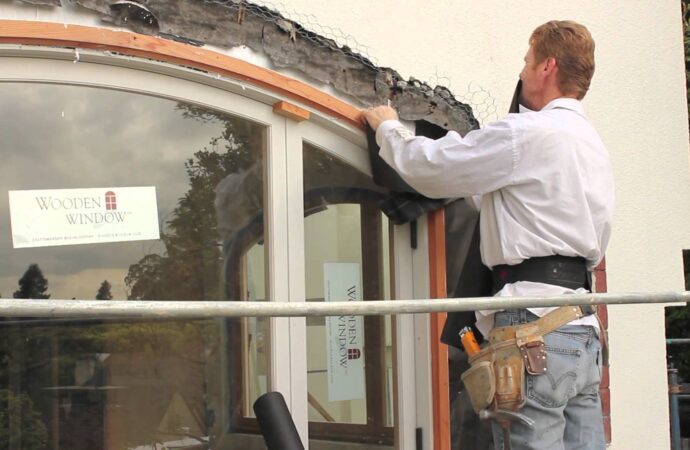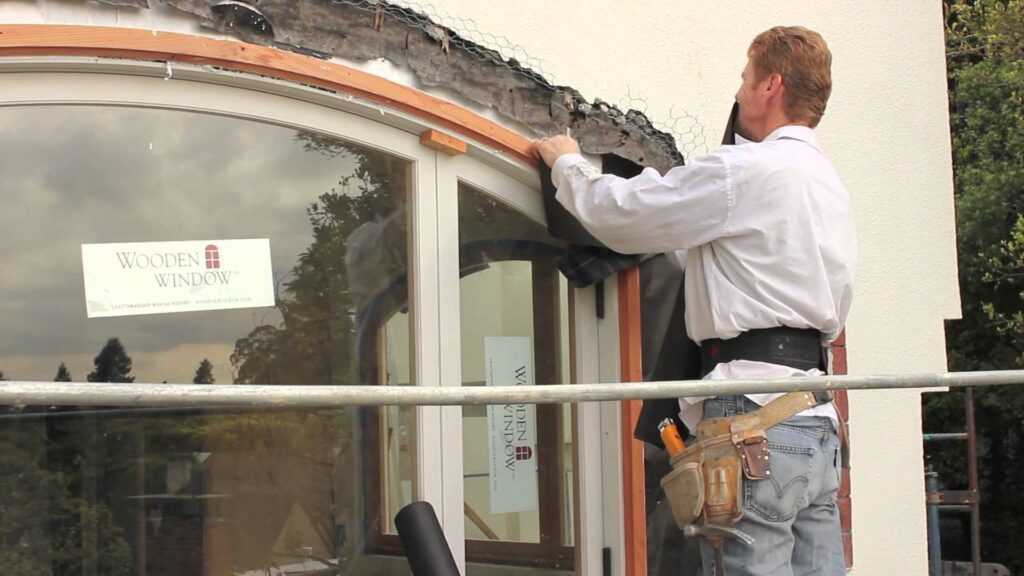Professional EIFS Installation Contractors in Wellington, FL
Contact Us

EIFS has been the standard in exterior building materials for many years now, on commercial and residential buildings. EIFS is a cladding technique designed to protect and insulate buildings while reducing energy costs. Through a particular layering process, starting inside the building and extending to the outer wall, the EIFS process insulates while preventing moisture build-up within the system. Besides, EIFS stucco can be painted in virtually any color that you may require. The porous surface absorbs paint with ease, offering long-lasting curb appeal and structural protection.
The EIFS installation requires an expert’s touch to achieve a beautiful and durable outer building shell. When obtaining bids for your EIFS project, you should always find verified applicators. We are a certified company in EIFS handling, and our team has full certifications in all forms of accepted commercial stucco fittings. Moreover, we have the experience that you can depend on, with high-rise EIFS designs, small business, and residential buildings, EIFS reconstruction, and a variety of synthetic stucco maintenance.
The most common type of EIFS used today is the system that includes a drainage cavity, which allows all moisture to exit the wall. EIFS with drainage typically consists of the following components:
- An optional water-resistive barrier (WRB) that covers the substrate
- A drainage plane between the WRB and the insulation board
- Insulation board typically made of expanded polystyrene (EPS) which is secured with an adhesive or mechanically to the substrate
- A water-resistant base coat
- Glass-fiber reinforcing mesh embedded in the base coat
- A finish coat that typically uses colorfast and crack-resistant acrylic co-polymer technology.
The installation of EIFS can be over the glass-mat gypsum sheathing, wood-based sheathing, plywood, and oriented strand board (OSB), masonry, plaster, concrete, or stucco. Ensure the replacement of any damaged sheathing before the process. The critical element of EIFS is to ensure there is no moisture accumulation not contaminants within the systems. A waterproof air barrier should be applied.
There are several steps to creating a proper EIFS application. Before beginning, prepare all the surfaces and make sure all components and scaffolding are on hand;
- Attachments; specifically designed adhesives are used to fasten all elements in the EIFS structure. Do not use Metal fasteners since the conductivity of the metal contradicts the process of reducing energy.
- Folding over with Reinforcing Mesh; a reinforcing mesh is attached to the substrate with the adhesive. The mesh will hold the insulation board that will come next by folding over around the edges of the board.
– Preparing the Insulation or EPS Board; the insulation boards should be cut with a knife using a T-square to guide the cut. While the minimum practical thickness of the insulation board is ¾-inch, most codes will allow up to 4 inches. When applying the boards, try to eliminate any gaps or thermal breaks between each piece.
– The application of Adhesive; apply the adhesive to the EPS with a notched trowel. The lines of adhesive should run parallel to the long dimension of the board.
– Installing the Insulation Boards; place the boards, so there is no space between them to create breaks. After installation, check for any cracks or spaces. If there are any, even the width of a credit card, they must be filled with an insulating material.
– The rasping process; using sandpaper rasp the entire insulation board surface, not just the joints, to ensure they are level and smooth.
– Base Coat and Mesh Application; apply a prescribed base coat to prevent sunlight from affecting the insulation board surface. The mesh is then embedded until it is no longer visible through the base coat. Allow the base coat to dry. A primer may be used here for complete protection.
– Finish Coating; apply the finish coat directly over the base coat in a continuous application.
– Floating or Spraying Textures; apply the outer surface with various products like stucco, limestone, different other textures, and application methods to cover the EIFS.
– Application of Sealant; the final protective step is the application of a sealant to any joints where the EPS boards may meet another surface like a doorframe or meter box. The sealant acts as a shock absorber between the two surfaces, stretching as the surfaces
The best prevention of future issues is having your stucco installed the first time correctly. When you choose painting or construction contractors who offer stucco installations as a secondary service, you will inevitably run into problems later. When your building deserves the best in local stucco installations, you need us to help you. We have the expertise you need to achieve longer-lasting results each time.
Locations We Serve
We offer the above services at the following locations within Wellington:
Additional HOAs We Service
If you are located in Palm Beach County and you don’t see your city/area listed above, don’t worry! We cover all of Palm Beach County. Fill out the contact form above or CLICK HERE and send us a message. We’ll get back to you asap!
Here is a list of our services you can get at Wellington Pro Painters & Popcorn Removal:
-
Commercial Painting Near Me
-
Commercial Popcorn Removal Near Me
-
Drywall Repair Near Me
-
Drywall Installation Near Me
-
Knockdown Texture Near Me
-
Orange Peel Ceilings Near Me
-
Residential Painting Near Me
-
Residential Popcorn Removal Near Me
-
Smooth Ceiling Finish Near Me
-
Commercial Painting Services
-
Commercial Popcorn Removal Services
-
Drywall Repair Services
-
Drywall Installation Services
-
Knockdown Texture Services
-
Orange Peel Ceilings Services
-
Residential Painting Services
-
Residential Popcorn Removal Services
-
Smooth Ceiling Finish Services
-
Commercial Stucco Installation Near Me
-
Complete EIFS Reinstallation Near Me
-
Custom Stucco and Texturing Near Me
-
Denglass Framing Near Me
-
EIFS Inspection Near Me
-
EIFS Installation Near Me
-
EIFS Wall Systems Near Me
-
Exterior Kitchen Stucco Near Me
-
New Construction Stucco Near Me
-
Stucco Application Near Me
-
Commercial Stucco Installation Services
-
Complete EIFS Reinstallation Services
-
Custom Stucco and Texturing Services
-
Denglass Framing Services
-
EIFS Inspection Services
-
EIFS Installation Services
-
EIFS Wall Systems Services
-
Exterior Kitchen Stucco Services
-
New Construction Stucco Services
-
Stucco Application Services

